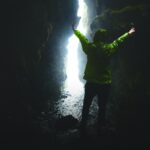What is Sound Design for Film? Definition, Examples & Ultimate Guide (studiobinder.com)
For this weeks Free Inquiry entry I have decided to focus on Sound Design within film. For this post I felt it would be most appropriate to break this post into three time periods due to the everchanging nature of sound design. These time periods are: Pre-1950s, 1950-2000, and 1990-Current. For this blog post I will also not be comparing or judging these films but explaining how sound design worked throughout that period, and then give examples from three films for each time period. Many of these films which were chosen are known for being groundbreaking and I would heavily recommend all of these films, especially Godzilla, King Kong (sensitive content from the time period), and Stalker, which are some of my favorite films ever made.
Pre-1950s:
Prior to the introduction of sound into films there was a period which was known as the silent era. This time period spanned primarily from 1894 until 1929. By the 1930s silent films had seen to have reached their complete peak and it was time for a new aspect of film to be added. This is when the films known as “talkies” were introduced. These films had a hard time coming into existence mainly due to the technology of the time and the intense labour it would have taken to include effective sound design. The main problems of adding sound into film came from the limited ability to synchronize and amplify sound so that all those in the audience could understand the film. The first attempt to achieve these two goals was completed but the design was very cumbersome due to it being a giant phonograph attached to a film projector. This quickly led to the construction and introduction of celluloid film which is what is still used. Some of the best examples of films which integrated early sound design into them were King Kong (1933), The Wizard of Oz (1939), and Citizen Kane (1941).
- King Kong [1933] by Merian C. Cooper & Ernest B. Schoedsack:
King Kong did not just include audio from the characters talking and the environment but was also one of the first movies which did all this on top of music. This was an incredible feat for this time period in film, as it was a very new technique which could sync audio, picture and music. The best example of this being done in the film is probably when King Kong fights the T-Rex on Skull Island.
- Wizard of Oz [1939] by Victor Fleming:
While the Wizard of Oz is famous for many reasons, including being misattributed as one of the first colour movies, but not often is the influential use of sound for the time discussed. This film integrated sound into it to make it much more engaging and suspenseful and did so in a way which was quite unique for the time period. It is no wonder why this film has become the cultural phenomenon it has and has stood the test of time. The best example of the use of sound combined with visuals in the movie is the twister scene in which Dorothy is taken to the Land of Oz. I have included a clip of this below.
- Citizen Kane [1941] by Orson Welles:
In the period which Citizen Kane was made there was possibly no one who knew more about the power of sound than Orson Welles. As many people are aware Orson began his career in radio and theatre due to the War of the Worlds hoax which sent some of the American world into a panic. This experience in artistic mediums which used sound he was able to bring a ton of experience into his directorial debut. I have included the breakfast montage scene from Citizen Kane which highlights his ability to combine picture and audio better than most of his time.
- Resources:
Movies and Film: A Brief History of Sound in Movies (infoplease.com)
Sound in the Wizard of Oz (1939) – ashyckell – ENG225 (wordpress.com)
Cinema is Forever!: The Sound of ‘Citizen Kane’
Study Of Sound In Citizen Kane Film Studies Essay (ukessays.com)
1950-2000:
The period of 1950 to 2000 was a period in which movies progressed at an incredible rate and thus not all features will be covered. By the 1950s there was a simplistic version of our modern celluloid film which could capture audio and picture at the same time. This made the combination of sound and video much more attainable. While the production and use of sound became much more wide spread in film, there was now the task of creating sounds which were not truly in the environment. This is called Foley, and while it did not begin in the 1950s it did start to become more popular in live action films. I will give three examples of Foley art that is seen within movies of this time and I have chosen some of my favorite examples, including Godzilla, Stalker, and Terminator.
- Godzilla [1954] by Ishiro Honda:
The Godzilla roar is an iconic noise which has changed over the time of the character existing but none have done it better than the original in my opinion. The noise of Godzilla in the original 1954 film was created by Akira Ifukube, a Japanese composer, and was achieved by coating a leather glove in resin and running it along a double bass with loose strings. This creativity highlights how much effort was put into sounds which are only heard a few times throughout the movie in this period.
- Stalker [1979] by Andrei Tarkovsky:
Tarkovsky’s Stalker is a film that is absolutely filled with incredible foley work but unfortunately many of the scenes from the movie are unavailable on YouTube or other sources. It is a fantastic Soviet film but it is not widely distributed. Due to this it was quite the struggle to find any clips from the film which were not an analysis so this clip is an extremely long one take of the main characters entering the zone on train tracks. This is a sound which was most likely just added into the film in post but was truly a recording of the track.
- Terminator 2 [1991] by James Cameron:
Terminator may not be the same kind of film as the others I have covered so far but the foley work in this movie is pretty creative and I thoroughly enjoy these movies. In the opening of Terminator 2 there is a scene of the T-800s traveling over an area covered in human bones. In this scene they crush several human skulls by walking on them which was achieved by crushing pistachio nuts.
- Resources:
Foley Artist: Everything You Need To Know – NFI
Foley Artists | They’re All Sound – HeadStuff
(168) Foley Artists: How Movie Sound Effects Are Made – YouTube
1990-Current:
For the period of 1990 until 2022 there was progression in audio design but mainly from a technological aspect rather than in a physical sense like foley work. For this reason, instead of explaining and breaking down how the sound design was done in a specific scene I have chosen three analysis videos of the sound design in the films I have chosen for this period. Due to this I will not be doing an analysis of all of the films and I will let the videos educate readers on the sound design of these films. I did this mainly because I do not fully understand this type of sound design and these videos do a much better job explaining them than I ever could. The films I have chosen for this period are District 9, Drive, and Dunkirk.
- District 9 [2009] by Neill Blomkamp:
- Drive [2011] by Nicolas Winding Refn:
- Dunkirk [2017] by Christopher Nolan:





